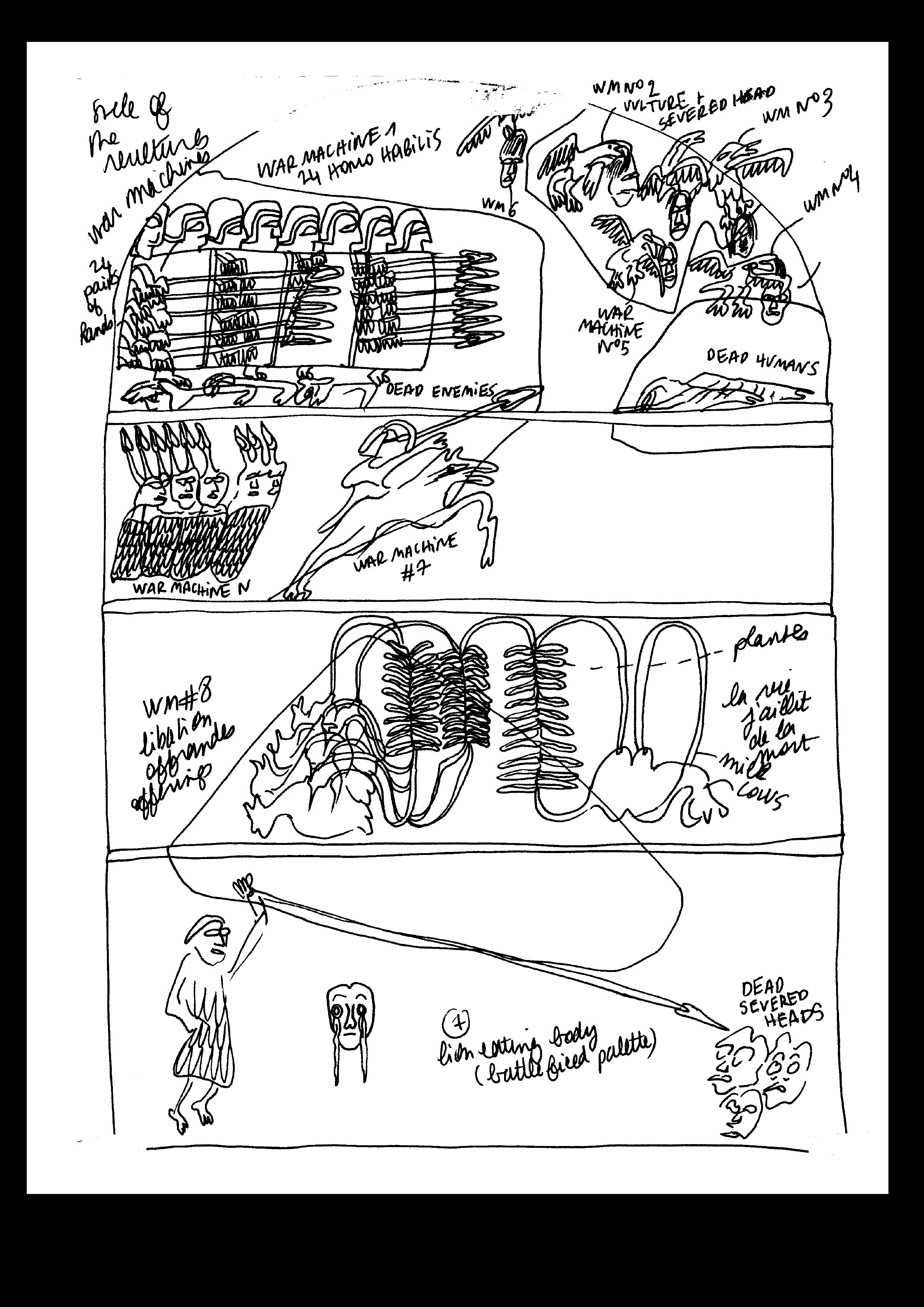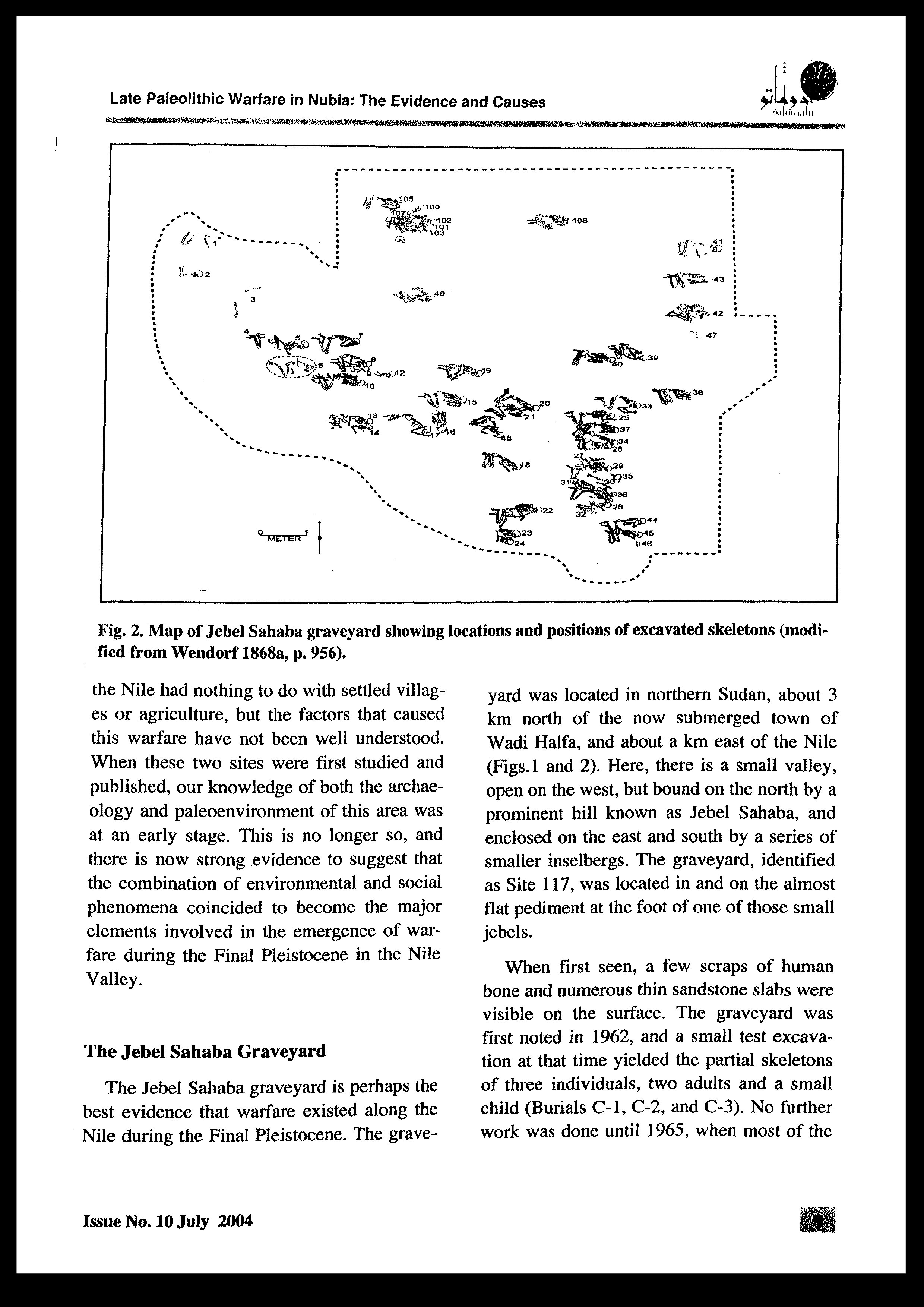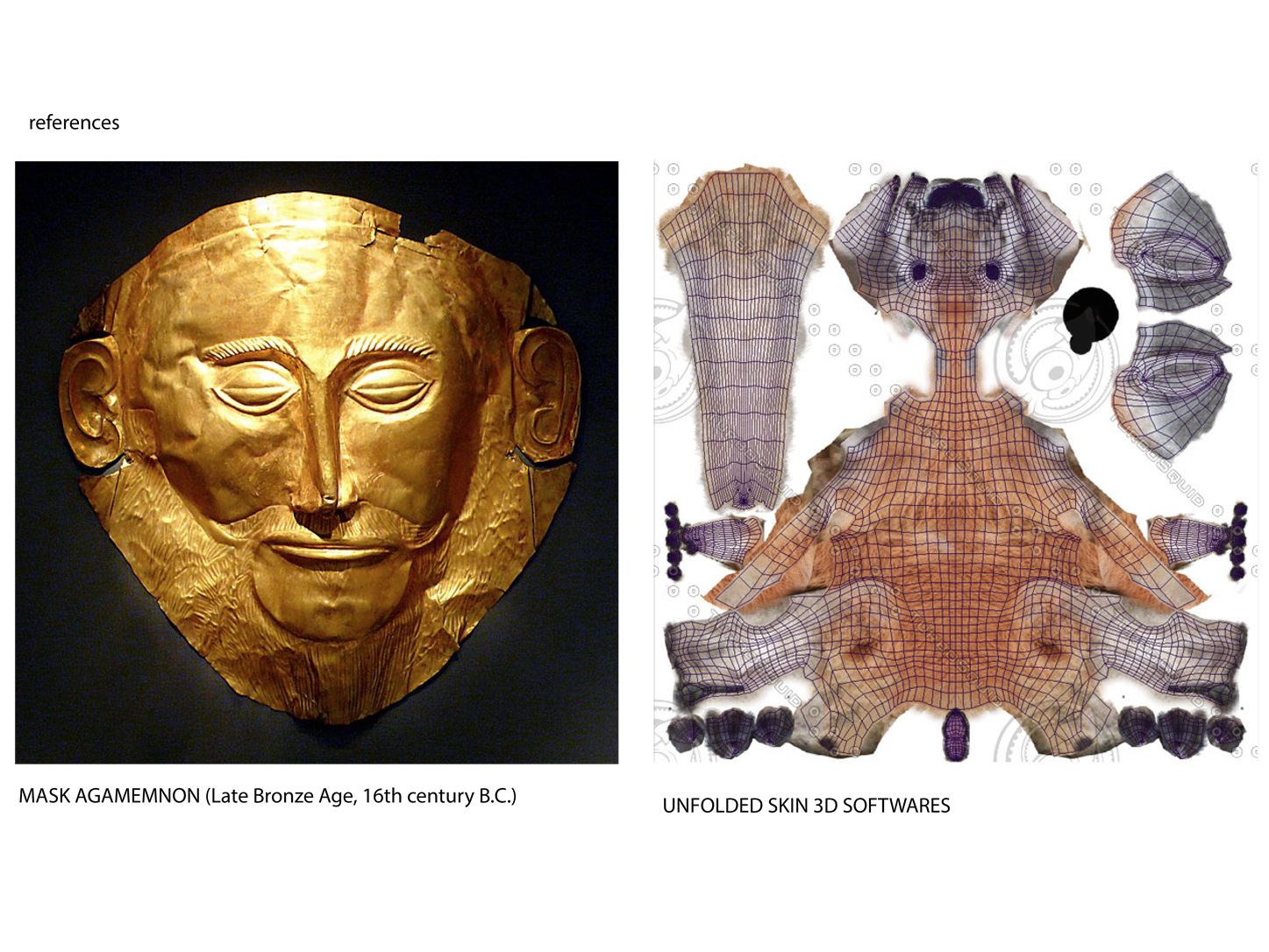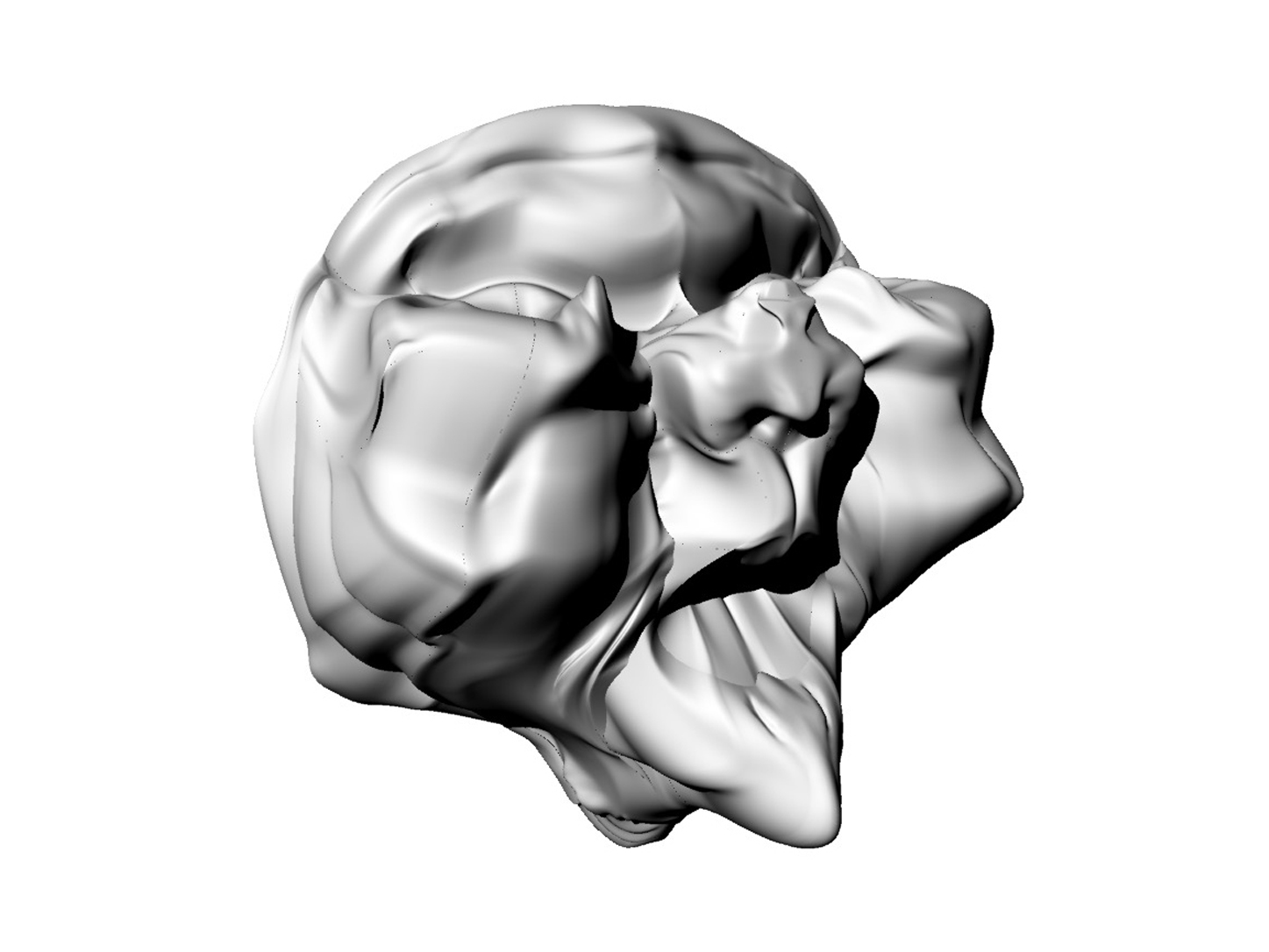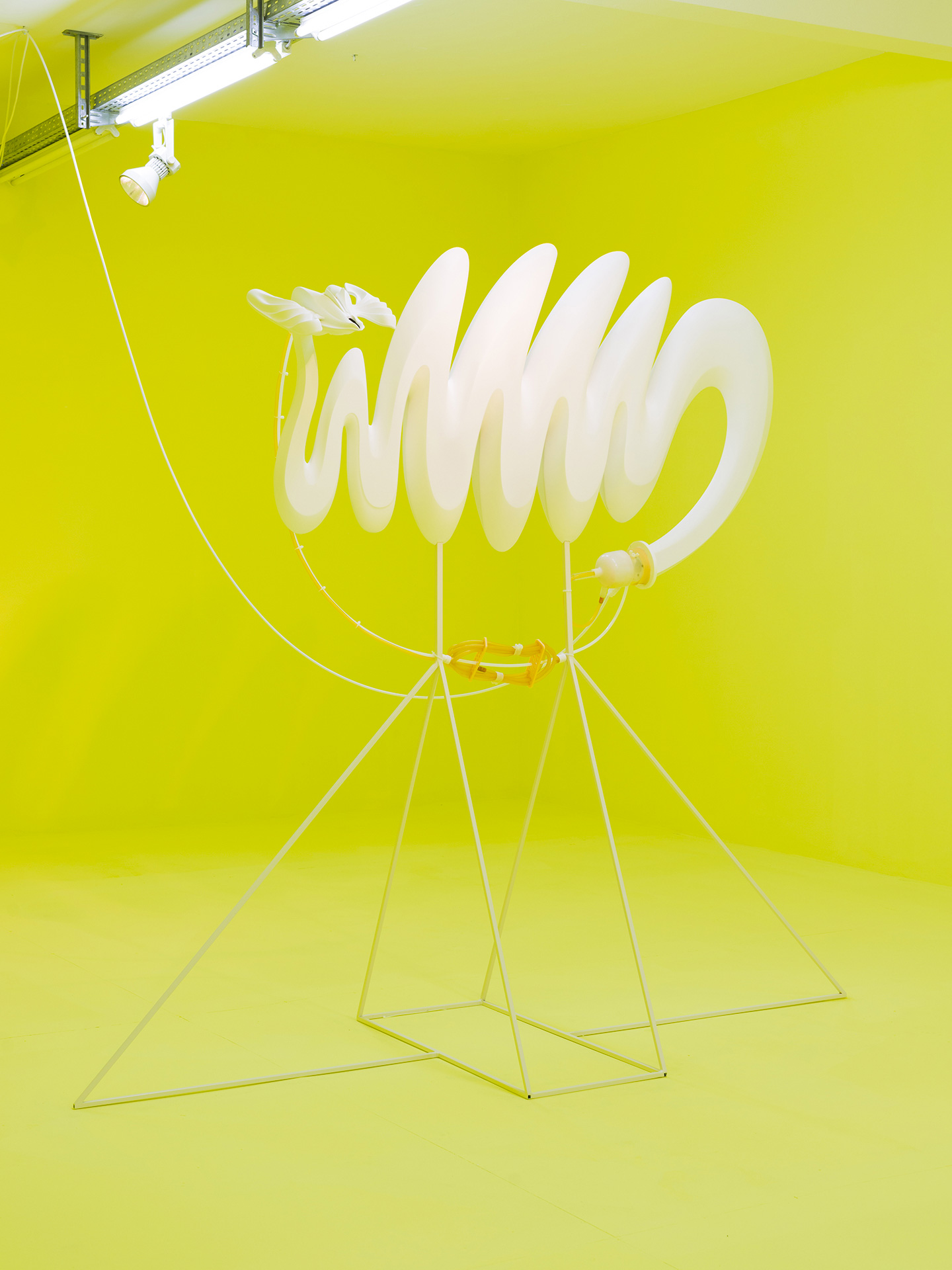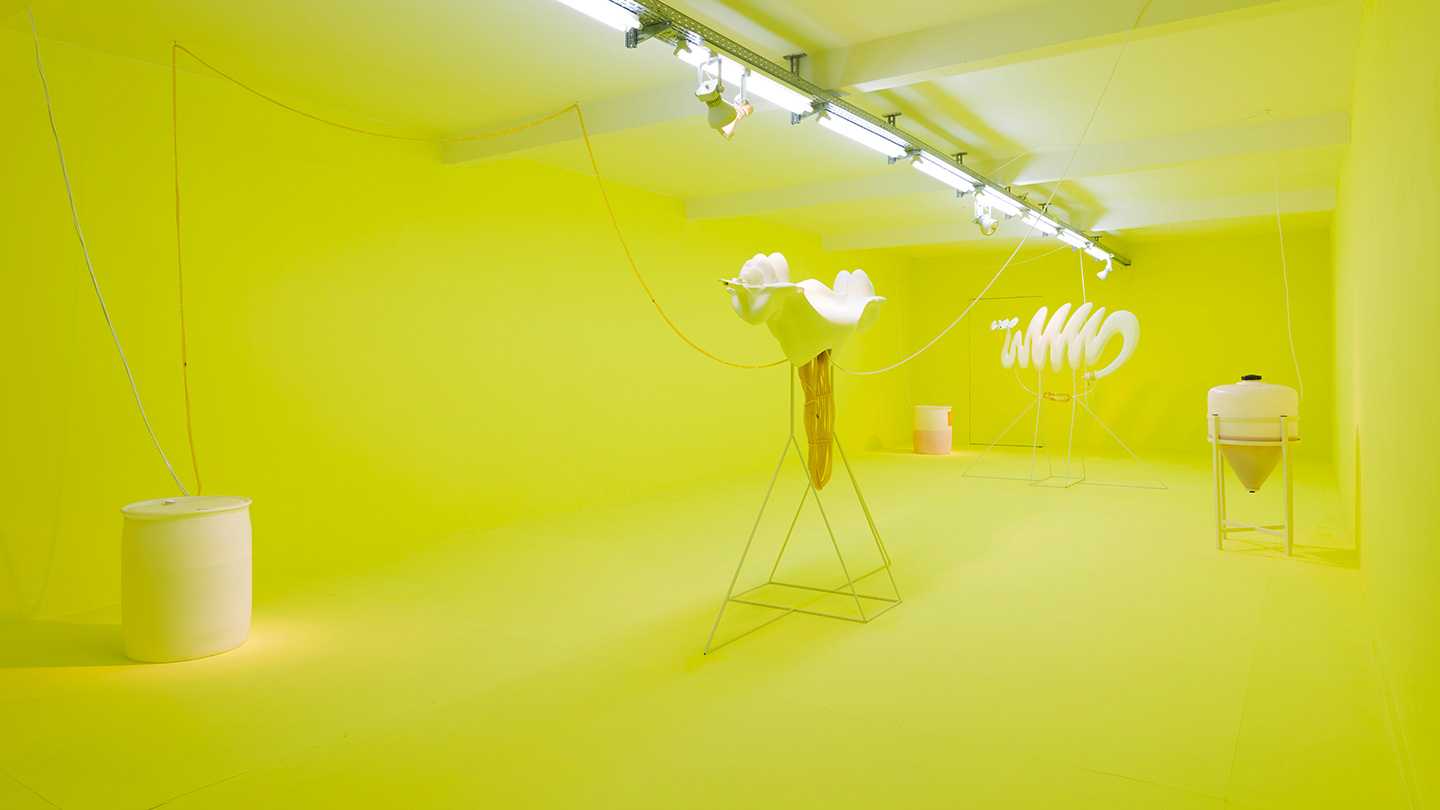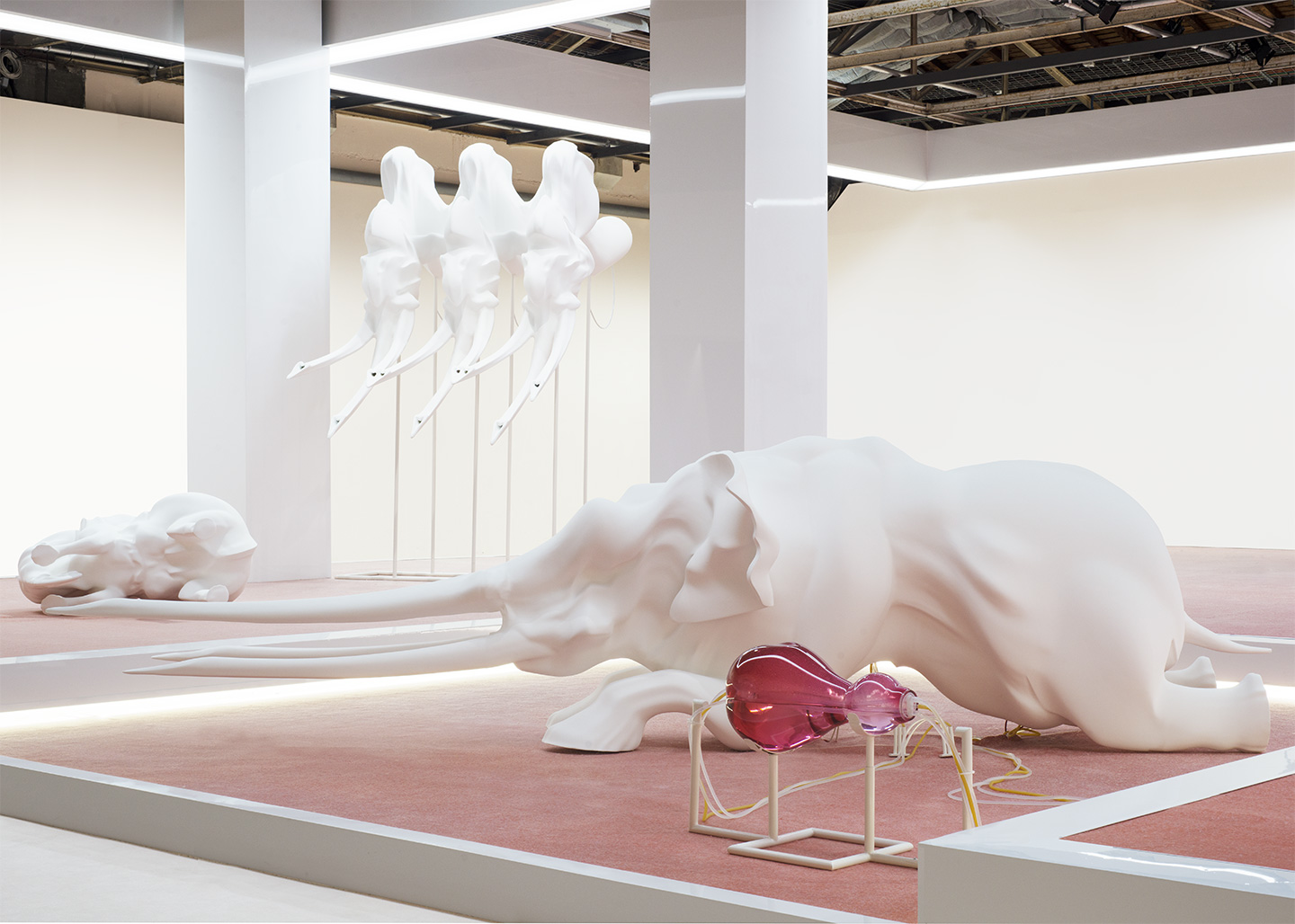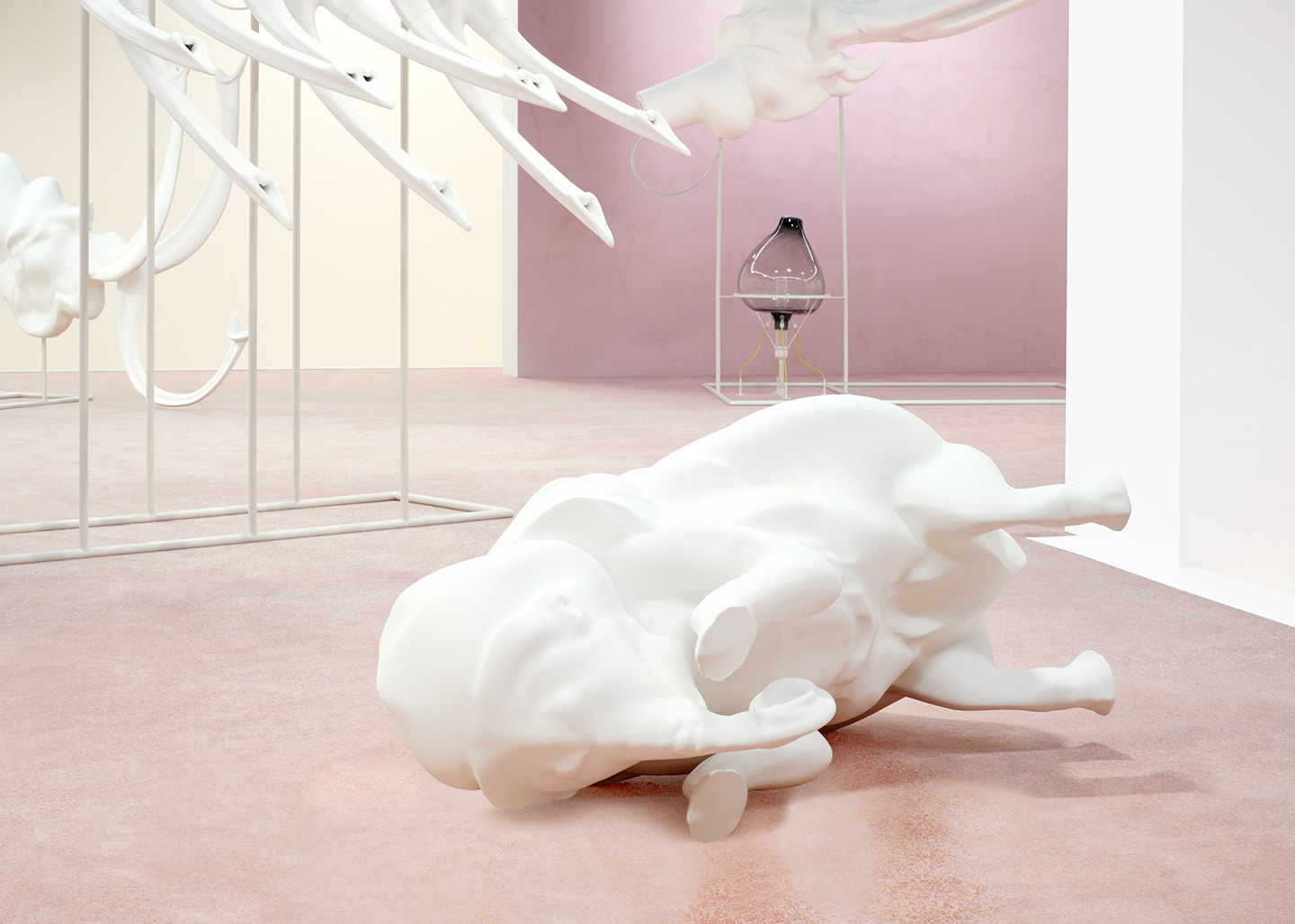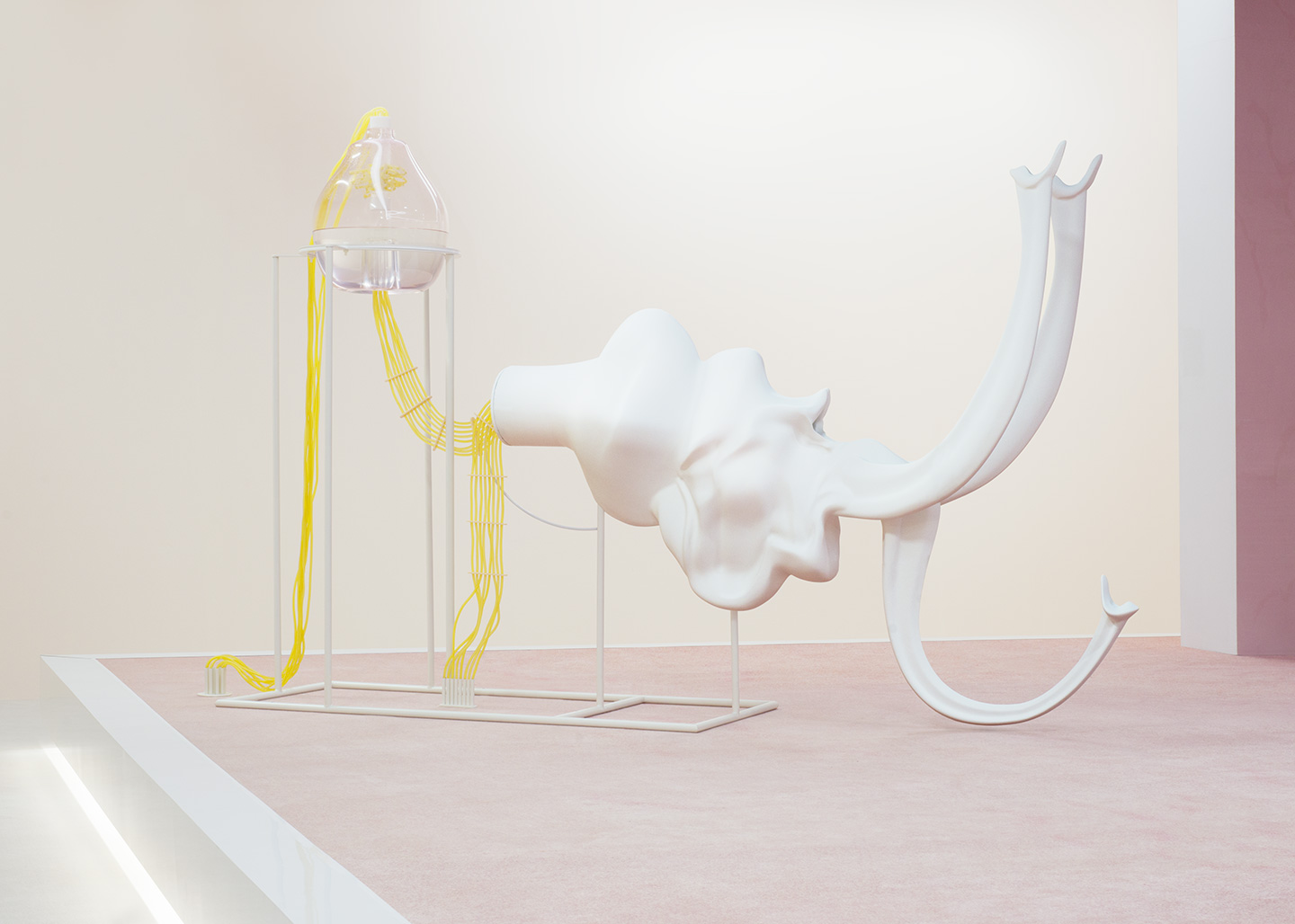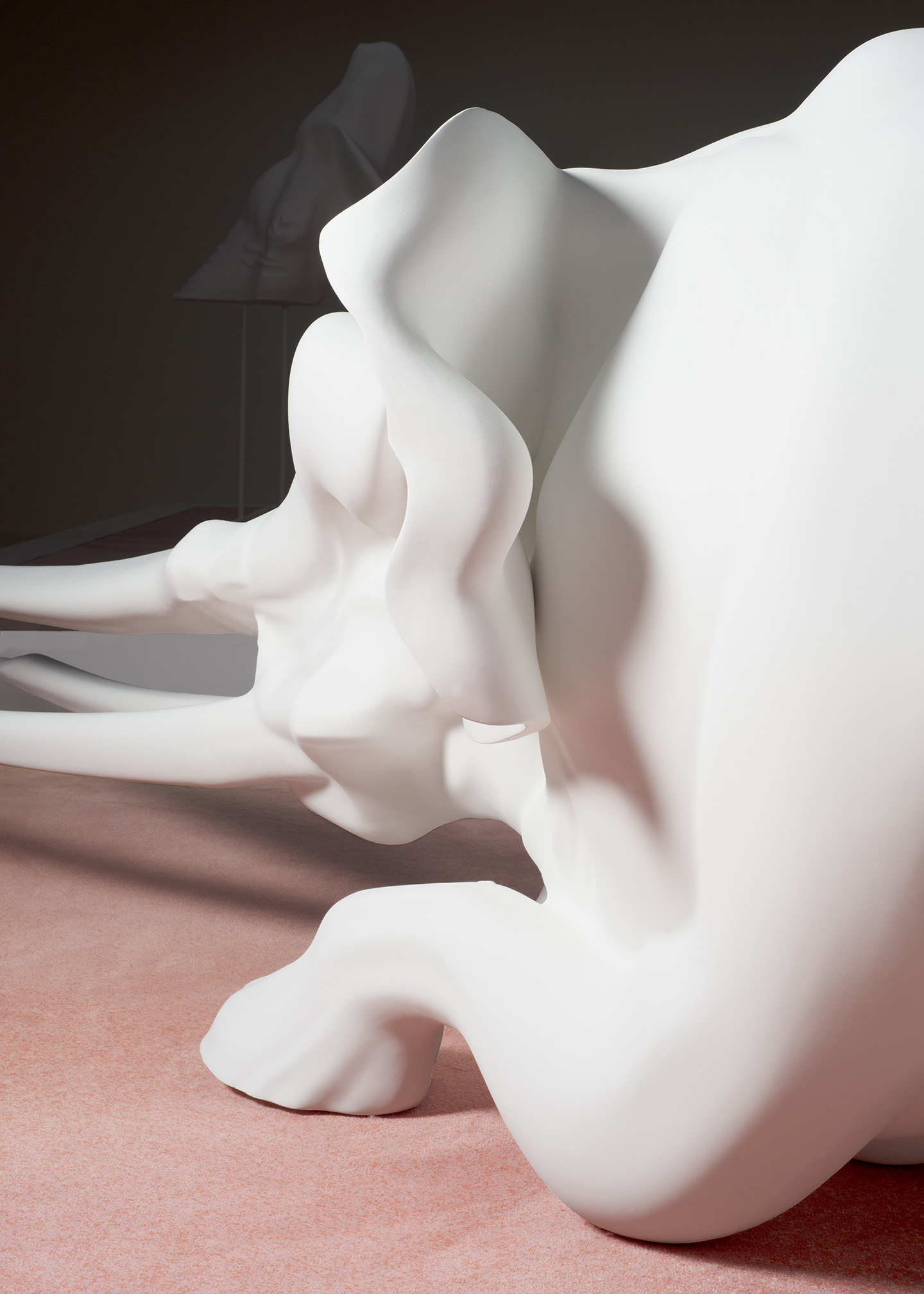MARGUERITE HUMEAU WINS THE BFSP #02
Marguerite Humeau (born 1986, France) lives and works in London. She studied at the Design Academy Eindhoven and at the Royal College of Art, London, where she obtained her MA in Design Interactions in 2011.
Her work has been shown in various solo and group exhibitions in galleries and museums including Palais de Tokyo (Paris), Château de Versailles, Haus Konstruktiv (Zürich Art Prize 2017), Tate Britain (London), Nottingham Contemporary, the High Line (New York), Manifesta11 (Zürich), Schinkel Pavillon (Berlin), the Museum of Modern Art (New York), and the Hayward Gallery (Touring Programme).
She currently teaches at HEAD – Genève and Open School East (Margate).
Marguerite Humeau’s work stages the crossing of great distances in time and space, transitions between animal and mineral, and encounters between personal desires and natural forces.
The work explores the possibility of communication between worlds and the means by which knowledge is generated in the absence of evidence or through the impossibility of reaching the object of investigation.
Marguerite Humeau weaves factual events into speculative narratives, therefore enabling unknown, invisible, or extinct forms of life to erupt in grandiose splendour.
Combining prehistory, occult biology and science fiction in a disconcerting spectacle – the works resuscitate the past, conflate subterranean and subcutaneous, all the while updating the quest genre for the information age.
www.margueritehumeau.com
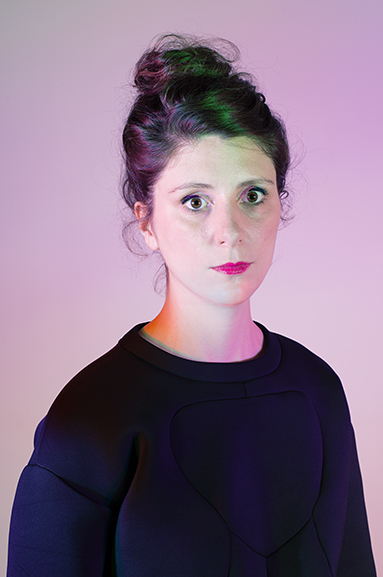
Marguerite Humeau is the winner of the second edition of the Battaglia Foundry Sculpture Prize.
Marguerite Humeau wins a scholarship, an artist-residency in the historical Fonderia Artistica Battaglia, beginning at the end of November 2017, and an exhibition of the winning artwork produced during the residency. The exhibition will open in April 2018, during the next edition of Miart, Milan’s Contemporary Art Fair.
The theme of the second edition of the BFSP invited artists to reflect upon the responsibilities and awareness implied in casting a form – a value, or a content – for eternity. After a careful analysis of the finalists’ projects, selected by 10 international advisors, the Jury of the BFSP announced that the winner of the BFSP#02 is Marguerite Humeau (1986, France) with the project Riddles, selected for the artistic research and coherent reflection within this year’s theme.
The Jury considered "Riddles" the most coherent project to the theme of the BFSP#02 call: an in-depth analysis of the conservation properties of bronze, and the translation of such quality as a potential vehicle of contemporary values in the future. Humeau’s project combines a detailed historical research to a well-informed creation of a contemporary mythology. The digitalised initial model proposed by the artist furthermore creates an interesting dialogue with the use of the ancient technique of lost-wax bronze casting. The work was conceived within an ongoing exhibition project, which will see the collaboration of the artist with different cultural realities around the globe.
35000 A.C (Sphinx Death Mask)
The winning project of the BFSP #02, 35000 A.C (Sphinx Death Mask), is by Marguerite Humeau, (1986, France) produced between January and February 2018, during the residency period in Fonderia Artistica Battaglia. This experience offered to the artist the opportunity to realise the proposed project in tight collaboration with the master artisans of Battaglia, who followed the production with Marguerite throughout all the process phases. The installation of Humeau’s final piece will take place between the Artists Studio, with a description and presentation of the residency time, and the actual foundry room of Battaglia, one of the most significant places of the bronze sculpture production in Italian history. The work does not reveal at first sight, yet it remains suspended as a silent guardian and orchestrator, almost as the public becomes the object of observation. The dense athmosphere of more than 100 years of bronze castings, the fire, earth, wax smell, involve the installation in a timeless discourse, the necessary unity between the past and the future, embossed in the present of matter.“The Sphinx to which Marguerite Humeau refers, emblematic and fabulous figure of the ancient tales, crosses the ages, coming from a distant past when humanity was born and going towards a fictionalized future where humanity will be absorbed by the machine. The Sphinx lives in us, it is a part of our selves through a constant transformation; it confronts us with the enigma and the limits of our lives, it challenges our destiny as much as it supervises us and destroys us, announcing a potential total annihilation of humankind.
The Sphinx is who protects the man but also the one that devours him. Marguerite Humeau interprets it as one of the oldest surveillance systems. The Sphinx is who protects the man but also the one that devours him. Marguerite Humeau interprets it as one of the oldest surveillance systems. Thus, in 2018, the Sphinx, named “Otto” by the artist, is deployed via surveillance and security devices present around the world, as a secret weapon to control humanity. Symbol of an implacable disembodied manoeuvre, which no human being can escape, it re-enacts the original carnage which was employed to destroy humanity and of which it was the inexorable weapon of the divinities and of an extra-ordinary nature.
(…)
The bronze mask that faces us plunges the viewers into a future scenario in which the Sphinx / drone would train to hide from the human eye at a time when the curve of history will reverse, to absorb and destroy humanity. From observer and protector, it becomes a predator. Its figure, captured in a movement and drawn with extreme precision, is represented here in high definition. It is a human flesh in full transformation, passing from zoomorphic to anthropomorphic, and from anthropomorphic to a warfare weapon. “
Alexandra Baudelot Download full press release here
PROJECT PROPOSAL FOR BFSP #02
RIDDLES
The proposal is part of RIDDLES, a large-scale project installed on different parts of planet Earth throughout the year 2017. RIDDLES aims at discussing the ambiguous status of security protocoles in our contemporary securitarian era by looking at their origin in ancient histories and more specifically in the figure of the sphinx. A hypothesis was formulated that the origin of the sphinx can be found in the origin of war. Evidence of the first conflict amongst humans was found in Site 117, an ancient cemetery where 61 individual skeletons were recovered, in Jebel Sahaba near the northern border of Sudan. At least 45% of these humans died of inflicted wounds, making this site the earliest evidence for inter-communal violence in the archaeological record. Some tiny bronze pieces, probably pieces of early weapons, have been found in the fossilised human skeletons. I have been working with archeologists, evolutionary biologists ethnologists and anthropologists around the world to excavate evidence and reenact the earliest war. I have analysed war mythologies common to all civilisations around the globe and have studied ancient war representations (Stele of Vultures, Ur Standard, Battlefield Palette) to fill in the gaps in knowledge. It seems that vultures, raptors and lions (that together compose the sphinx figure) could have been part of this battle. They are therefore the most ancient domesticated war animals; and interestingly enough, also the only man-eating animals on the planet. Did the vultures help kill these early hominids? Are the bronze pieces remnants of mythical sphinx talons, who would have come to life and be protagonists in this early massacre?
